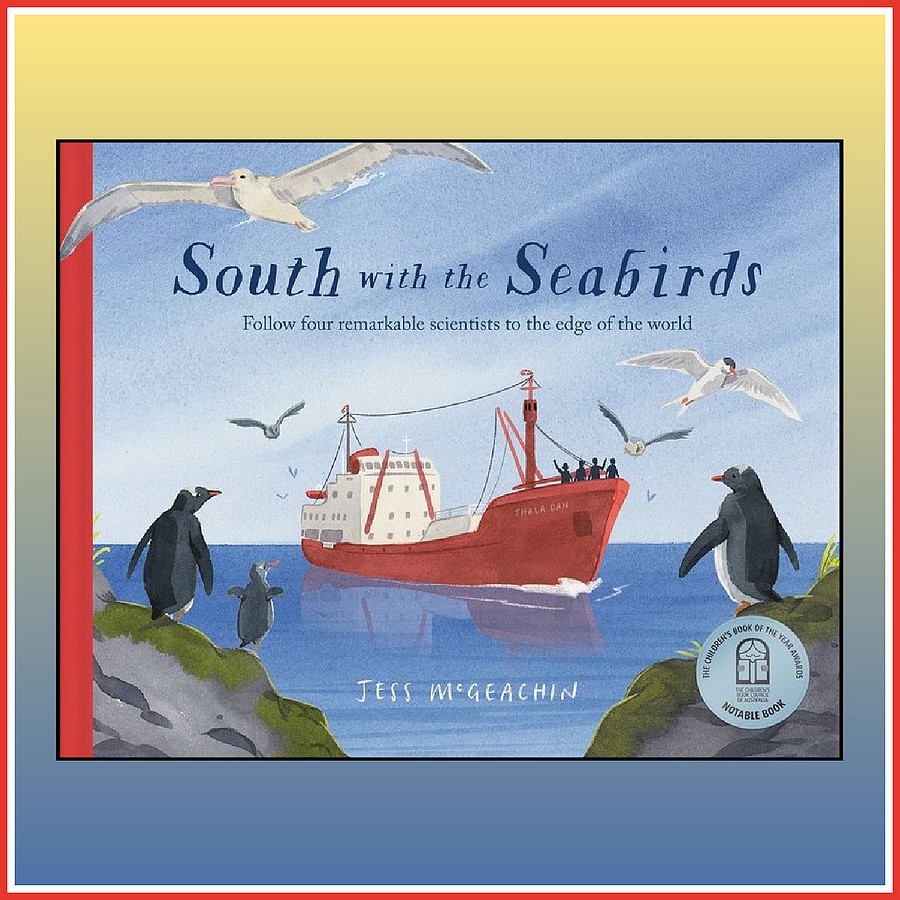
Title: South with the Seabirds
Author and Illustrator: Jess McGeachin
Publisher: Allen and Unwin
Publication date: September 3, 2024
Themes: Marine biology, Macquarie Island, wildlife native to the island including penguins, seals and seabirds, effects of sealing, studies of the ecosystem, effects of introduced feral species, conservation and the environment
Comprehensive teachers’ notes are available on the Allen and Unwin website here
South with the Seabirds by Jess McGeachin and published by Allen and Unwin is a non-fiction picture book that explores the journey of four female scientists who had to petition to be recognised, considered and eventually invited to be the first women to join a research expedition to Macquarie Island. The time was 1959 and Antarctica was regarded as a place for “heroes and adventurers”. These labels were synonymous with men, not dedicated researchers and scientists like Mary Gillham, Isobel Bennett, Hope Macpherson and Susan Ingham, trailblazing women who faced many barriers, yet independently petitioned, stating their case to politicians and people in power to earn their spot on the icebreaking ship, Thala Dan.
Each of the four women specialised in different fields, Mary Gillham analysed the effects of sea birds on the island’s vegetation; Isobel Bennett, a pioneering marine biologist; Hope Macpherson’s research was in malacology and marine biology, Isobel and Hope were interested in finding out more about the animals that lived in the rock pools and Susan Ingham studied the seals at Macquarie Island. All four of the women watched the penguins.
Jess McGeachin seamlessly weaves the research of these four women together and accompanies their individual contributions with double page spreads featuring the diverse wildlife and marine animals the women encountered and studied. These detailed, labelled illustrations and the informative text are a perfect springboard for readers wanting to investigate life on Macquire Island further.
Each of the women’s work has had a lasting impact and contributed to the growing body of knowledge about this island, yet on their return there seemed to be more interest in their appearance rather than their scientific research.
The story concludes with present day scientists on Macquaire Island, a different time evident by the change in the landscape of the island and different technology the researchers are using as they observe four lakes, named after the first four female scientists to join an Australian research expedition.
The endpapers contain a labelled map of Macquarie Island and the final pages contain a timeline beginning 600 000 years ago to 2023, further information about the four scientists as well as inspiring tips for a young naturalist.
This story deftly highlights that barriers need not be an impediment to achieving goals and there is no telling how far your interests and skills can take you, they many allow you to embark on an adventure that leaves a legacy for future generations.
